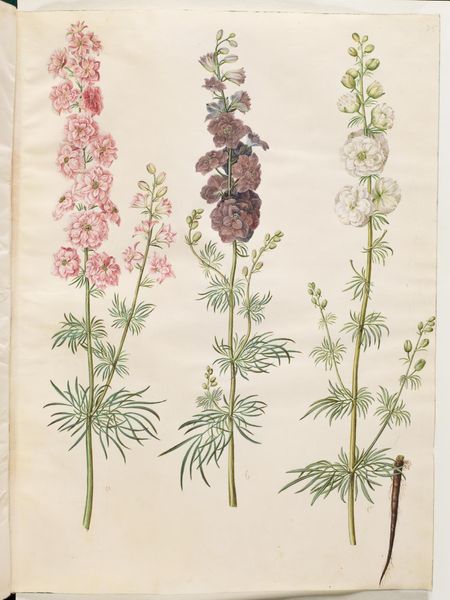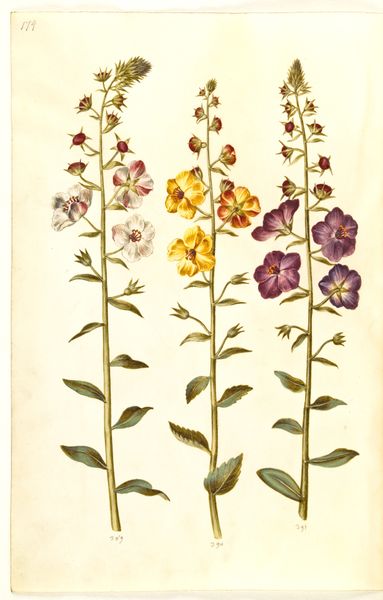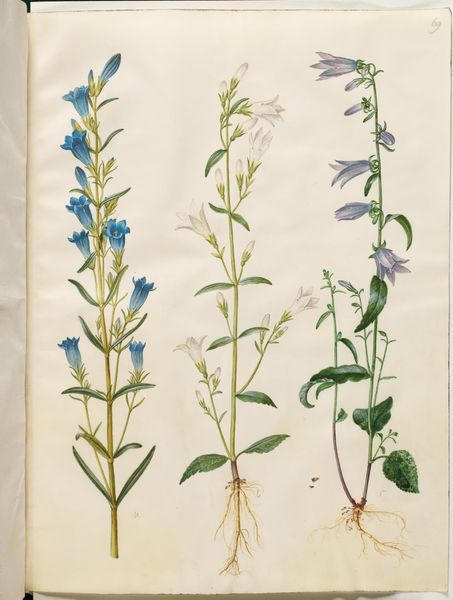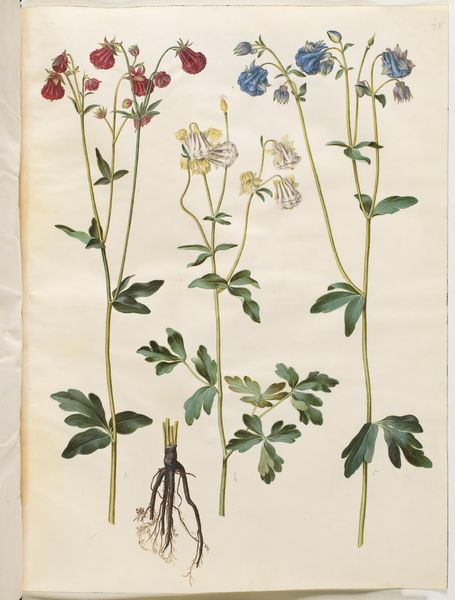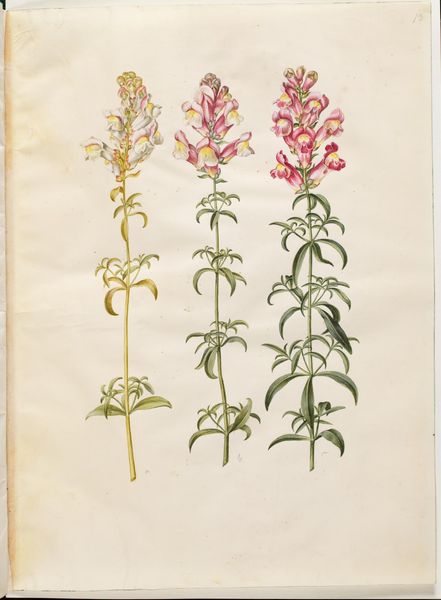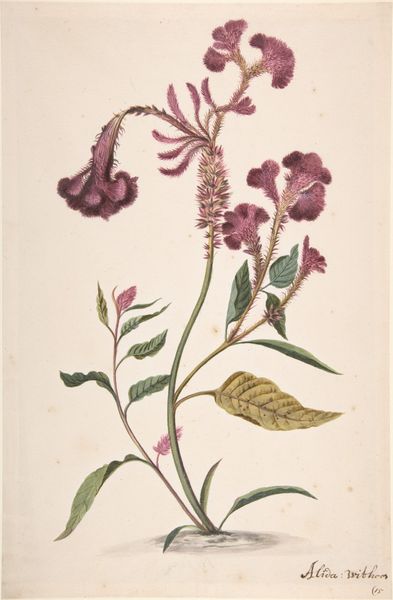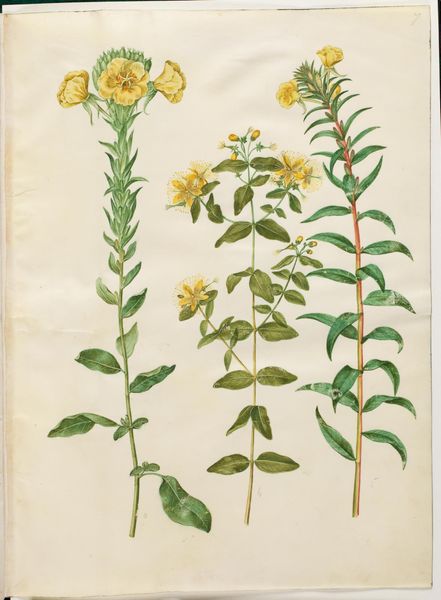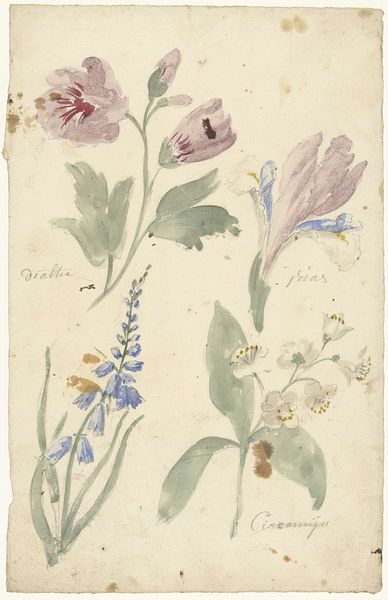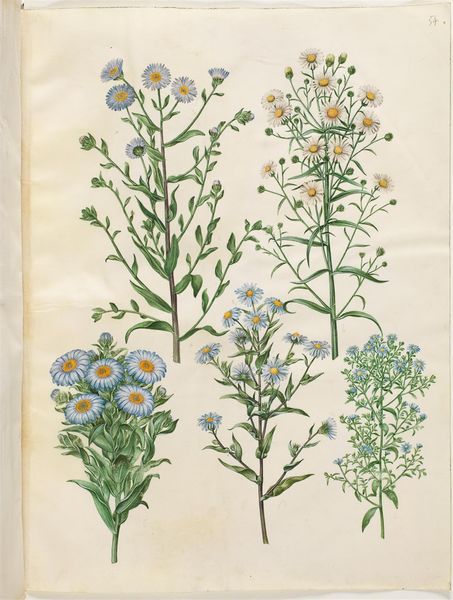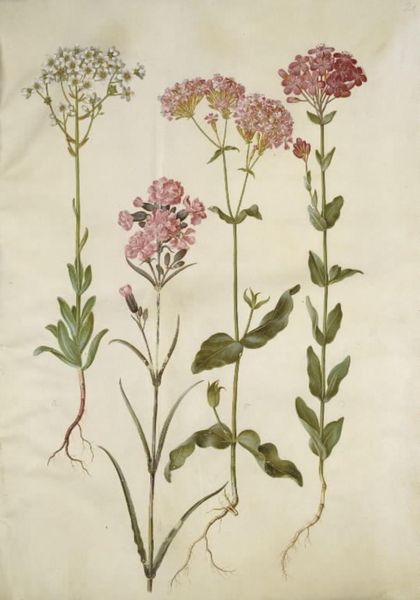
Verbascum blattaria (klase-kongelys); Verbascum phoeniceum (purpur-kongelys) 1649 - 1659
0:00
0:00
drawing, gouache, watercolor
#
drawing
#
water colours
#
gouache
#
11_renaissance
#
watercolor
#
watercolour illustration
#
botanical art
#
watercolor
Dimensions: 505 mm (height) x 385 mm (width) (bladmaal)
Curator: Well, if that isn't the sweetest little gathering of colors! What strikes you first about this botanical study? Editor: Such meticulous detail. It reminds me of being lost in an old apothecary's garden. I find myself wanting to inhale the paper, seeking out that herbal, almost medicinal scent. But tell me more... Curator: What we're looking at is titled “Verbascum blattaria (klase-kongelys); Verbascum phoeniceum (purpur-kongelys)" by Hans Simon Holtzbecker, dating back to between 1649 and 1659. He worked with watercolors and gouache to render these… what, mullein plants? The botanical precision is breathtaking. Editor: Yes, 'breathtaking' is the word. The starkness against that creamy page… almost clinical, yet there’s also this undeniable vulnerability in the exposure of the roots. It makes me consider these specimens are more than just objective studies, perhaps metaphors for life itself, fragile yet determined. Curator: Holtzbecker clearly wasn’t merely documenting; he was composing. Consider how the distinct colors and forms of each plant are arranged – it's like a conversation unfolding between them, echoing a delicate ballet in shades of violet, yellow, and ghostly white. Editor: It makes one think about cultural memory embedded within images of flora, doesn't it? Back then, did specific hues correspond with diverse sentiments, or medical practices? Curator: Certainly! Color symbolism was profound at that time. Yellow for instance, while joyous today, often represented deceit or illness then. Purples spoke of royalty but also penitence, depending on context. Holtzbecker, being aware, infused deeper significance in choosing hues and placement on each page. Editor: Makes me consider it’s like each flower represents a chapter, and that we're able to decipher that tale with every brushstroke and shaded hue. So the more we look at his detailed botanical paintings, we find a wider mirror of ourselves. Curator: Exactly! The act of seeing becomes an act of reflecting. Well, on that note, it appears we have unearthed so much already about some modest mullein, let us now cultivate insight into yet other gems that await nearby!
Comments
No comments
Be the first to comment and join the conversation on the ultimate creative platform.
